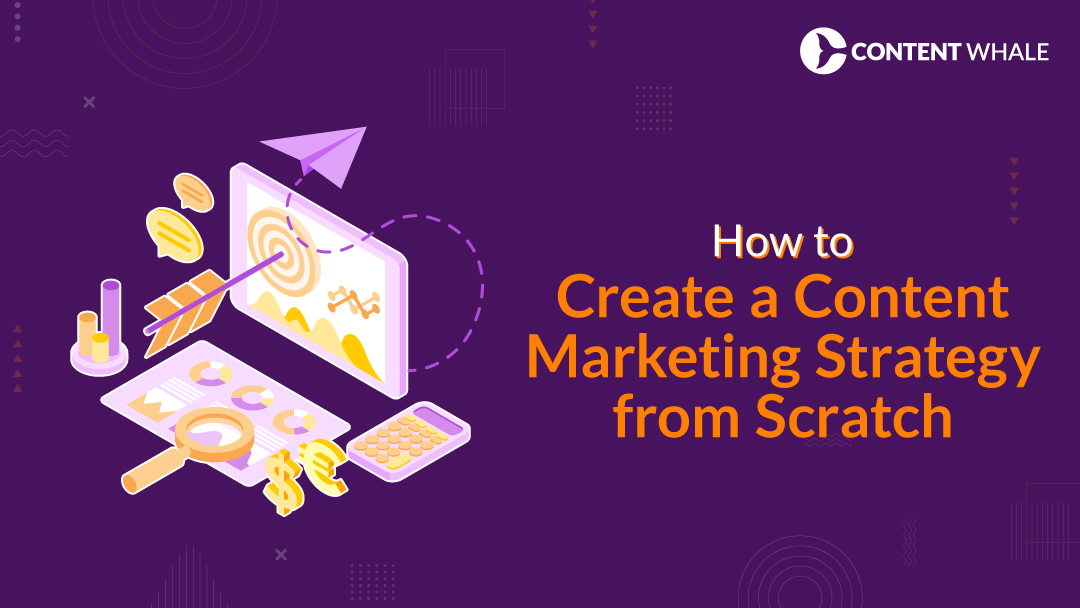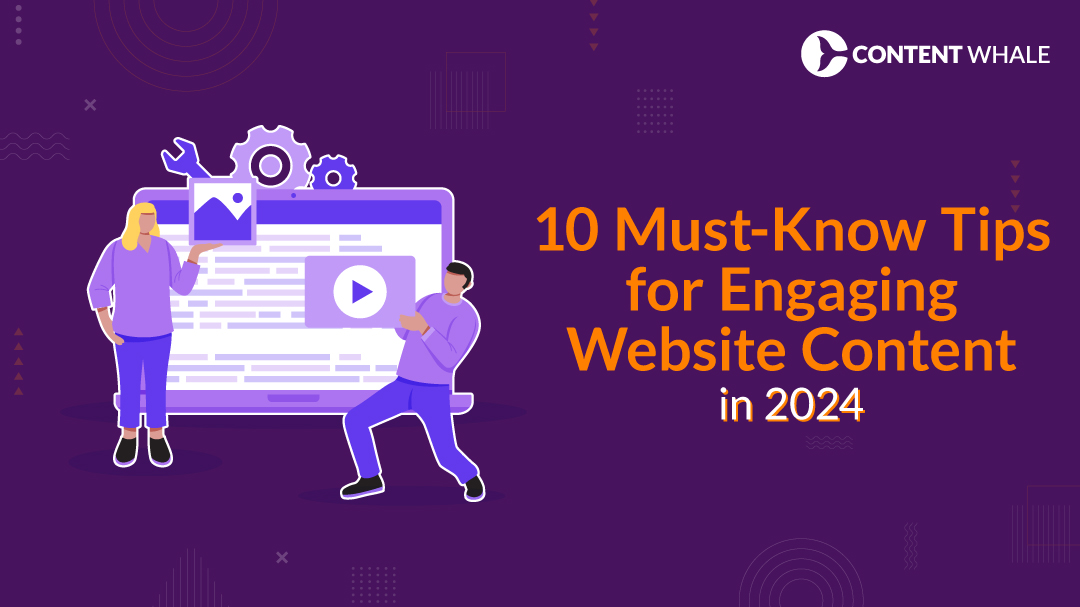Understanding how to create a content marketing strategy from scratch is vital for business success. This guide covers the basics of content marketing and its importance. It details the steps to develop a comprehensive content marketing plan, including setting goals, identifying your target audience, and planning content creation and content distribution. The guide also offers practical content marketing tips for creating engaging, high-quality content and distributing it effectively. Additionally, it highlights essential tools and resources to support your digital marketing strategy and shares best practices to optimize your content marketing efforts for sustained success.
Creating a successful content marketing strategy is essential for any business. Content marketing is a method of attracting and engaging an audience by creating and sharing valuable content. It plays a significant role in a digital marketing strategy, helping businesses build trust, improve conversions, and boost search engine rankings.
A well-defined content marketing plan is vital. It ensures that your content efforts align with your business goals and audience needs. By following a structured approach, you can create compelling content that drives traffic and generates leads.
This blog will walk you through how to create a content marketing strategy from scratch. You’ll learn about setting goals, understanding your audience, and effective content creation. We’ll also cover content distribution strategies and offer practical content marketing tips to maximize your results. Whether you’re a beginner or looking to refine your strategy, this guide will provide you with the tools and knowledge needed for success.
Understanding Content Marketing
1. Definition and Purpose of Content Marketing
Content marketing involves creating and sharing valuable content to attract and engage your audience. The primary goal is to build trust and loyalty among potential and existing customers. Unlike traditional advertising, content marketing focuses on providing useful information that meets the audience’s needs.
2. Benefits of a Strong Content Marketing Strategy
A well-executed content marketing plan offers several benefits:
- Increased brand awareness: High-quality content helps your brand become more recognizable.
- Improved search engine rankings: Regular content creation boosts your SEO efforts.
- Better audience engagement: Engaging content keeps your audience interested and invested in your brand.
- Higher conversion rates: Informative content guides prospects through the buyer’s journey, leading to more conversions.
3. Examples of Successful Content Marketing Campaigns
Several brands have successfully implemented content marketing strategies:
- HubSpot: Known for its extensive blog and resource library, HubSpot provides valuable content that attracts and retains customers.
- Red Bull: Through its extreme sports videos and events, Red Bull engages its audience with thrilling and visually appealing content. This approach aligns with the brand’s energetic and adventurous image.
- Spotify Wrapped: This annual campaign leverages user data to create personalized and shareable content showcasing individual listening habits. It drives massive social media engagement and brand visibility each year.
- DuoLingo: Known for its humorous and relatable TikTok content, DuoLingo uses social listening and A/B testing to create engaging videos that resonate with a younger audience. Their approach has significantly boosted their follower count and engagement on the platform.
Understanding these fundamentals helps you see the impact of a strategic approach. Next, we will discuss how to create a content marketing strategy from scratch.
Steps to Create a Content Marketing Strategy from Scratch

1. Define Your Goals and Objectives
Start by defining clear, measurable goals. Decide what you want to achieve with your content marketing plan. Goals include increasing brand awareness, driving website traffic, generating leads, or boosting sales. Setting specific objectives helps focus your efforts and measure success effectively.
2. Identify Your Target Audience
Understanding your audience is essential. Create detailed buyer personas that outline demographics, interests, pain points, and preferences. Use surveys, social media insights, and website analytics to gather this data. Knowing your audience helps tailor your content creation to meet their needs and interests.
3. Conduct a Content Audit
Evaluate your existing content to identify strengths, weaknesses, and gaps. Determine which pieces performed well and why. Look for content that can be updated, repurposed, or improved. This audit informs your future content marketing strategy and ensures your new content aligns with your goals.
4. Perform Keyword Research and SEO Analysis
Keyword research is vital for driving organic traffic. Use tools like SEMrush or Ahrefs to identify relevant keywords for your industry. Focus on both short-tail and long-tail keywords to capture a broad and specific audience. Incorporate these keywords naturally into your content to improve SEO and increase visibility on search engines.
5. Develop a Content Calendar
A content calendar helps plan and organize your content creation and content distribution. Schedule your content around key dates, product launches, and industry events. Use tools like Trello or Asana to keep track of topics, deadlines, and publishing dates. Consistency is key to maintaining audience engagement and achieving your goals.
These steps provide a solid foundation for learning how to create a content marketing strategy from scratch. By following these guidelines, you can develop a structured and effective approach to content marketing that drives results and supports your broader digital marketing strategy.
Effective Content Creation Tips

1. Understanding Different Types of Content
Content comes in many formats. Common types include blog posts, videos, infographics, and podcasts. Blog posts are excellent for detailed articles, while videos can demonstrate products or share behind-the-scenes insights. Infographics simplify complex information visually, and podcasts offer an engaging way to discuss topics in depth. Choosing the right format depends on your content marketing plan and audience preferences.
2. Tips for Creating High-Quality and Engaging Content
Creating high-quality content is essential for audience engagement. Here are some content marketing tips:
- Know your audience: Tailor content to their interests and needs.
- Be consistent: Maintain a regular posting schedule.
- Focus on value: Provide useful and actionable information.
- Use clear language: Avoid jargon and keep your message straightforward.
- Incorporate visuals: Enhance text with images, videos, and infographics.
3. Incorporating Storytelling into Your Content
Storytelling makes your content more engaging and memorable. Share customer success stories, case studies, or personal experiences that relate to your brand. Use a narrative structure with a clear beginning, middle, and end. This approach helps connect emotionally with your audience, making your content creation more impactful.
4. Ensuring Content is SEO-Friendly
Optimizing your content for search engines is vital for visibility. Here are some content marketing tips for SEO:
- Keyword integration: Naturally incorporate relevant keywords into your content.
- Meta descriptions: Write compelling meta descriptions for each piece of content.
- Header tags: Use H1, H2, and H3 tags to structure your content.
- Internal linking: Link to other relevant pages on your website.
- Alt text for images: Describe images with alt text to improve accessibility and SEO.
By following these tips, you can create content that resonates with your audience and supports your digital marketing strategy. This will enhance your content distribution efforts and drive better results. Next, we will explore how to create a content marketing strategy from scratch by distributing your content effectively.
Content Distribution Strategies

1. Identifying the Best Channels for Content Distribution
Choosing the right channels is crucial for effective content distribution. Focus on platforms where your audience is most active. This might include social media networks, email newsletters, and your website blog. Each channel has its strengths. Social media offers broad reach and engagement, while email newsletters provide a direct line to your audience.
2. Using Social Media to Amplify Your Content
Social media is a powerful tool for audience engagement. Share your content on platforms like Facebook, Twitter, LinkedIn, and Instagram. Use engaging visuals, compelling headlines, and hashtags to increase visibility. Interact with your audience by responding to comments and messages. Consistent posting helps maintain visibility and builds a loyal following.
3. Leveraging Email Marketing for Content Distribution
Email marketing is effective for nurturing leads and maintaining contact with your audience. Segment your email list to send targeted content that addresses specific interests. Use engaging subject lines and personalize your emails to increase open rates. Regularly update your audience with newsletters that include your latest content, promotions, and updates.
4. Collaborating with Influencers and Partners
Partnering with influencers can expand your reach. Choose influencers whose audience aligns with your target market. Collaborate on content such as guest posts, videos, or social media takeovers. This strategy introduces your brand to a broader audience and adds credibility. Collaborations with industry partners can also enhance your content distribution efforts.
5. Measuring the Success of Your Content Distribution Efforts
Tracking the performance of your content is essential. Use analytics tools to measure key metrics like views, shares, and engagement rates. Google Analytics and social media insights provide valuable data on how your content performs. Review these metrics regularly to understand what works and adjust your content marketing plan accordingly.
These strategies will help you effectively distribute your content, ensuring it reaches and engages your target audience. This is a crucial part of learning how to create a content marketing strategy from scratch and optimizing your digital marketing strategy. Next, we will explore useful tools and resources for enhancing your content marketing efforts.
Tools and Resources for Content Marketing

1. Overview of Useful Content Marketing Tools
Several tools can enhance your content marketing plan and streamline your content creation process. Here are some essential ones:
- BuzzSumo: Helps you discover popular content and trending topics. It also provides insights into what performs best in your industry.
- HubSpot: Offers a comprehensive suite of marketing tools, including content management, email marketing, and analytics.
- Trello: A project management tool that helps organize and plan your content calendar. It allows you to track tasks, set deadlines, and collaborate with your team.
2. How to Choose the Right Tools for Your Needs
Selecting the right tools depends on your specific requirements and budget. Start by identifying the key functions you need, such as SEO optimization, social media management, or email marketing. Compare different tools based on features, ease of use, and customer reviews. Free trials can help you test a tool before committing to a purchase.
3. Tips for Using These Tools to Streamline Your Content Marketing Process
Here are some content marketing tips for effectively using these tools:
- Centralize your content planning: Use Trello or Asana to keep all your content ideas, drafts, and schedules in one place.
- Automate repetitive tasks: Use HubSpot to automate email campaigns, social media posts, and lead nurturing processes.
- Analyze performance: Utilize Google Analytics and BuzzSumo to track content performance and gain insights into what works best.
- Collaborate effectively: Share access with team members and set clear roles and responsibilities to ensure smooth workflow.
By leveraging these tools, you can enhance your content creation and content distribution efforts, making your overall digital marketing strategy more efficient and effective. This knowledge will support you in learning how to create a content marketing strategy from scratch. Next, we will discuss best practices for optimizing your content marketing strategy.
Best Practices for Optimizing Your Content Marketing Strategy

1. Continuously Analyzing and Refining Your Strategy
Regular analysis is key to improving your content marketing plan. Use tools like Google Analytics to track performance metrics such as traffic, engagement, and conversions. Evaluate which content types and topics perform best. Adjust your content creation and content distribution strategies based on these insights to achieve better results.
2. Staying Updated with Industry Trends and Best Practices
The digital marketing landscape is dynamic. Stay informed by following industry blogs, attending webinars, and participating in online forums. Implementing the latest content marketing tips can keep your strategy relevant and effective. Subscribing to newsletters from thought leaders like Neil Patel and HubSpot can provide valuable insights.
3. Encouraging Audience Feedback and Engagement
Feedback from your audience is invaluable. Encourage comments, shares, and discussions on your content. Use surveys and polls to gather opinions and suggestions. Engaging with your audience helps build a loyal community and provides insights into their preferences and needs.
4. Aligning Your Content Marketing Efforts with Overall Business Goals
Ensure your content marketing strategy supports your broader business objectives. Set clear goals that align with your company’s mission and values. This alignment helps maintain focus and ensures that your content marketing efforts contribute to your business’s success. Regularly review and adjust your strategy to stay on track.
5. Adapting to Changes in the Digital Marketing Landscape
Be prepared to adapt your strategy as new trends and technologies emerge. Experiment with different content formats and distribution channels. Stay flexible and open to change to keep your digital marketing strategy effective. Regularly update your content and approach based on the latest industry developments.
By following these best practices, you can optimize your content marketing strategy for better results. This comprehensive approach will help you understand how to create a content marketing strategy from scratch and maintain its effectiveness over time. Next, we will conclude with a recap and final thoughts.
Conclusion

A well-defined content marketing strategy is crucial for business success. It aligns your content with business goals, ensures consistent messaging, and effectively engages your audience. A strategic approach enhances brand visibility, improves SEO, and drives conversions. Understanding how to create a content marketing strategy from scratch empowers you to make informed decisions and optimize your digital marketing strategy.
Begin crafting your content marketing plan today. Define your goals, understand your audience, and plan your content creation and content distribution. Use the content marketing tips discussed to create engaging, high-quality content that resonates with your audience.
Regularly analyze and refine your strategy to stay relevant and effective. Content marketing is dynamic and requires continuous improvement. Stay updated with industry trends, embrace new technologies, and be ready to adapt. Engaging with your audience and aligning your efforts with business objectives will ensure long-term success. By following these steps, you will master how to create a content marketing strategy from scratch and achieve your marketing goals.
FAQs
Why is a content marketing strategy important?
A content marketing strategy is essential because it aligns your content efforts with business goals. It ensures consistent messaging, engages your audience, and drives traffic and conversions. A strategic approach to content creation helps improve SEO, build brand awareness, and establish trust with your audience.
How do I identify my target audience for content marketing?
Identifying your target audience involves creating detailed buyer personas. Use demographic and psychographic data to understand their interests, pain points, and preferences. Tools like Google Analytics, social media insights, and surveys can help gather this data. Knowing your audience ensures your content marketing plan meets their needs and interests.
What types of content should I include in my strategy?
Your content marketing strategy should include a variety of content types to engage different segments of your audience. Common formats include blog posts, videos, infographics, podcasts, and social media updates. Each type serves a unique purpose, from detailed articles that educate to engaging videos that entertain and inform.
How can I effectively distribute my content?
Effective content distribution involves sharing your content on platforms where your audience is active. Use social media, email newsletters, and your website to reach your audience. Partner with influencers and industry leaders to expand your reach. Track performance using analytics tools to refine your digital marketing strategy.
What tools can help with content marketing?
Several tools can enhance your content marketing plan. BuzzSumo helps discover trending topics, HubSpot offers comprehensive marketing tools, and Trello assists with planning and organizing your content calendar. These tools streamline content creation and content distribution, making your strategy more efficient and effective.





